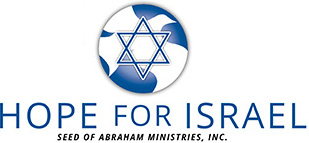בס”ד
Parashat Bamidbar (In the Wilderness) Numbers 1:1-4:20
Haftarah: Hosea 2:1-22
This week we begin reading the book of Numbers, the fourth book of the Law. Much of this book deals with the Tabernacle. The book opens with a census of all the tribes of Israel including Ephraim and Manasheh. It is important to note that the Levites are not included in this census. (See Numbers 1:47). In chapter three, special attention is given to the Levites and they are counted in their own census. Three families are singled out: Gershon, K’hat, and Merari. In chapter four Moses is instructed to take a special census of the K’hat family.
This family was given the assignment of transporting, and of course setting up and taking down, the most holy portions of the Tabernacle. In regard to this work one reads,
“This is the work of the sons of K’hat in the Tent of the Meeting (the Tabernacle) holy of holies. And Aaron and his sons will come when the camp is journeying and take down the veil partition and cover it and the Ark of the Testimony. They shall set upon it a covering Tachash skin and spread over (it) a garment entirely of t’chelet over it from above and place it staves.” Numbers 4:4-6
The point I want to make is that Aaron and his sons had to conceal from the K’hat family the Ark of the Covenant and the Holy Veil that separated the Most Holy Place from the Holy Place before the K’hat family could enter and do their work. Why was this? The answer is because it is forbidden to look upon the Ark.
When the Philistines decided to return the Ark, they transported it from Ashdod to Ekron and the people there did not want it either, for the Hand of HaShem was against them. As the Ark moved closer to Jerusalem it passed through Bet Shemesh and one reads,
“And He struck at the men of Bet Shemesh because they looked at the Ark of HaShem and He struck among the people 70 men and 50,000 men…” I Samuel 7:19
The point that needs to be made is that the same restrictions that HaShem placed upon the K’hat family, and for that matter all of Israel, not to look at the Ark of the Covenant, also were binding on those who lived at Bet Shemesh. Judges 1:33 informs the reader that those living in Beth Shemesh were servants of the tribe of Naphtali, but were not Jewish. Because they had exposure to the Israelites they had heard about the Ark and offered sacrifices which were also a violation of Torah law as only priests could do this. These individuals had not received the Torah and they did not know of these rules, but nevertheless they were punished. One learns from this that HaShem punishes people for violating the truth and not just the truth that they know.
I know someone is going to write to me and say, “What about the verse which says, ‘…for where no law is, there is no sin” (See Romans 4:15). Certainly one does not mean that before the giving of the Torah, sin did not exist. From the same book of Romans I would answer,
“For as many as have sinned without law shall also perish without law…”
Romans 2:1
This opens up a large issue, more than this brief article can deal with.
Here is an unrelated question for you to discuss among yourselves on Shabbat. Why was t’chelet used to cover the ark?
Shabbat Shalom
Share this Post
